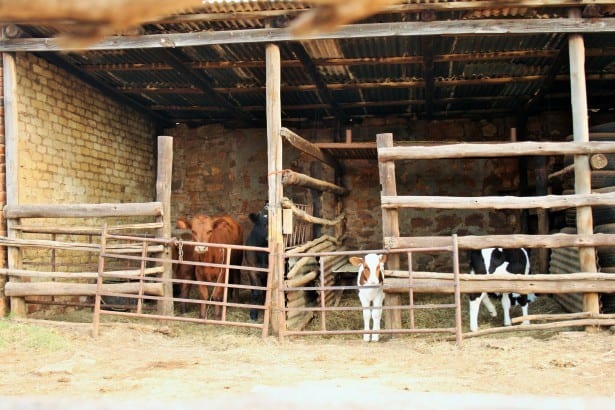Cattle Infrastructure
Prior to buying your cow(s), some thought must be given to any infrastructure you will need prior to the animal’s arrival…
Water supply is essential, as is access to food (grass or forage), which may need to be supplemented depending on what your goals are.
Basic handling facilities or a corral are enormously helpful, especially with a head restraint or squeeze to hold a cow steady if she has any medical treatment due (or even if you’re having trouble milking). This chute and corral are also needed to load or offload animals coming onto the farm or being sent away for sale if/when the time comes. There are hundreds of designs for these corrals available on the internet; choose one to suit your needs and budget.
You’ll need some fenced in space to let them roam. Taking time to give careful thought into the location of gates, water troughs, feeding areas, etc., is time well spent. A gate in the middle of a fence almost always causes a problem. If you’re trying to herd your animal out of the field, they can choose to run either direction. Gates close to corners of fences are better.
Permanent fencing can be put in with careful planning, but for the most efficient and sustainable grazing practices (which we’ll talk about in dept on Day 30), less expensive temporary fencing can be used. Use it at first, at least, until you have evaluated the carrying capacity of the fields you will graze rotationally.
Have any farming neighbors? A local cattle farmer with years of experience in corral design and use, as well as animal management, might be willing to share some wisdom, so make friends! Advice from those who are already doing what you’re doing is often the most practical, and it generally comes at no cost… invite your farmer friends over for coffee and cake or beers and snacks, and you’re likely to get a wealth of information.

